A Look at the Routers in BT’s 500Mbps UK G.fast Broadband Trial
A lot has already been said about BT’s forthcoming 300-500Mbps capable “ultra fast fibre” G.fast (NGA2) broadband technology, which is currently being trialled in parts of Swansea (Wales), Huntingdon (Cambridgeshire) and Gosforth (Newcastle), but not a lot has been seen of the consumer router hardware being tested by Openreach.. until now.
The current trials are due to run for 6-9 months, which suggests that they should start to conclude by around the end of Spring or Summer 2016. After that BT has pledged to make the new service available to 10 million premises by 2020 (roughly 40% of the UK) and then “most of the UK” by 2025, although they will initially only offer the 300Mbps (50Mbps upload) service before increasing to the full 500Mbps over the next decade.
Advertisement
The G.fast (ITU G.9700/9701) technology itself works in a roughly similar way to the current VDSL2 based ‘up to’ 80Mbps Fibre-to-the-Cabinet (FTTC) service (i.e. a fibre optic cable is run to your local street cabinet and then the remaining copper run to your home uses VDSL to deliver the service), which is so often called “fibre broadband” despite actually being a slower hybrid-fibre solution.
However the G.fast service, unlike VDSL, requires significantly more spectrum (G.fast 106MHz+ vs VDSL 17MHz) and so it can only deliver its best speeds over much shorter copper lines (ideally below 350 metres). As such G.fast nodes aren’t restricted to street cabinets and can also be distributed via small nodes (dp) that may be built either underground (manholes) or placed on top of nearby telegraph poles etc.
In the home environment the main approach will function in a not dissimilar way to the current VDSL based FTTC service, which means that you will need to plug your phone cable into a special G.fast equipped modem or a combined modem + router device (ignore the bottom end-user ONT in the diagram below as that’s more for the FOD2/FTTP part of BT’s trial).
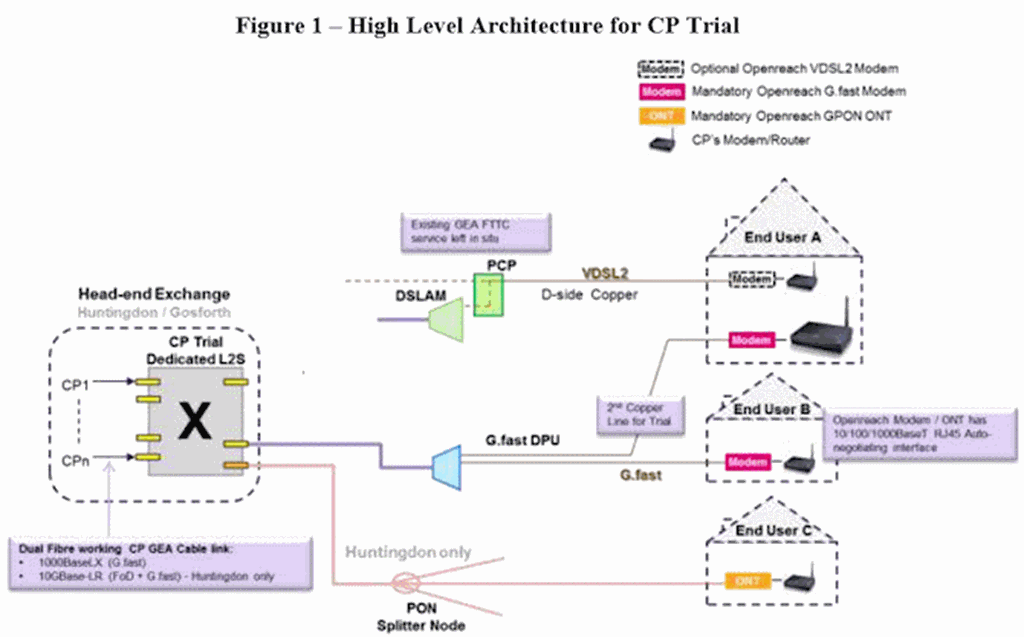
At present Openreach informs ISPreview.co.uk that they’re testing four different router/modem devices as part of their trials, including the Huawei MT992 (Huntingdon trial), ZINWELL zGFS-1001C (Huntingdon trial), Technicolor MediaAccess TG799vac Xtream (Huntingdon trial) and Alcatel Lucent F-240W-A (Gosforth trial).
Advertisement
Sadly we don’t have a lot of details for these units, but we will try to offer a bit of extra information below. It should be stressed that this is trial kit and Openreach has not made a final decisions about what hardware it will actually support / deploy to customers and they may also test other devices in the future.
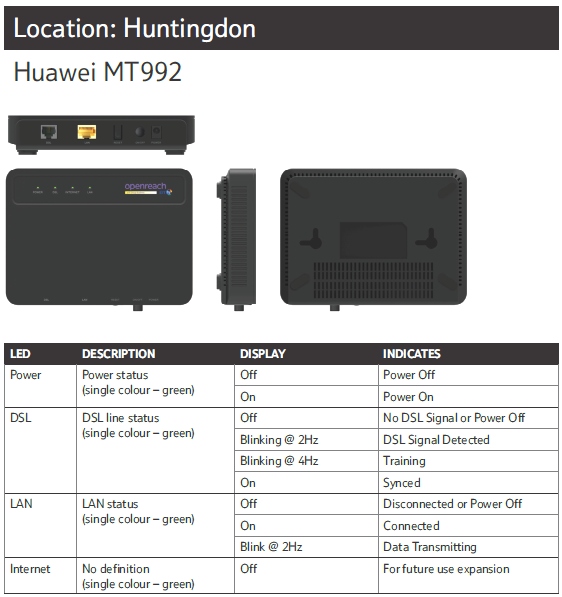
You won’t find much public information about the Huawei MT992 online, although from what we can tell this appears to be the G.fast modem-only equivalent of Openreach’s VDSL Modems. Like those devices it is technically a router with very reduced features, although the intention here is likely that the unit would act as a separate G.fast modem that could then be plugged into the customers own router (possibly as part of an engineer installation).
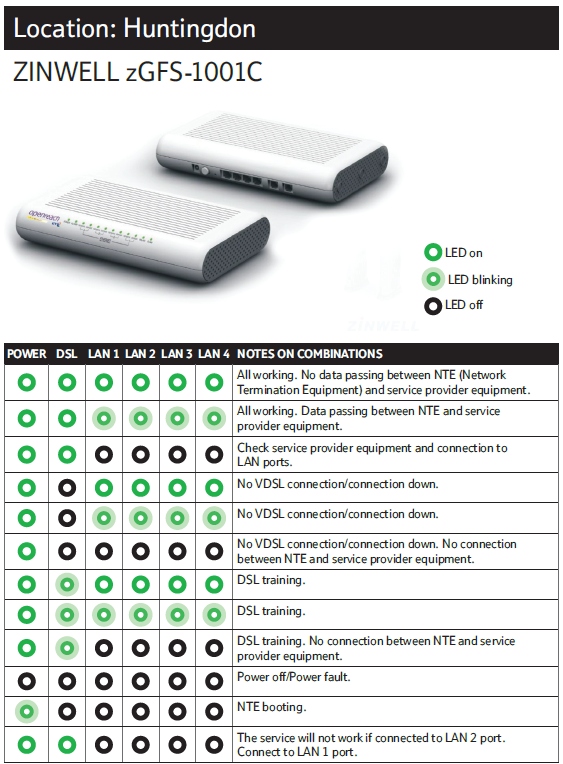
Once again there’s not a lot of information on the ZINWELL zGFS-1001C, although it’s based off Sckipio Technologies’ G.fast modem chipset. It’s also immediately clear from the picture that this is not a modem-only device like the Huawei and features a number of LAN ports, as well as support for the 802.11ac WiFi standard, which turns it into a fully-fledged router.
The approach here is likely to support a self-installation (no engineer) service and it also optionally supports Reverse Power (here), which effectively means that electricity could in the future be sucked from your home or office and used to power BT’s broadband nodes (as opposed to the usual approach of BT providing the power); assuming end-users and Ofcom ever approve (initially BT will power G.fast the normal way). Reverse Power would save money and make it easy to deploy in remote areas, but it’s controversial to ask home owners to cover power costs and there are regulatory issues to overcome.
Advertisement
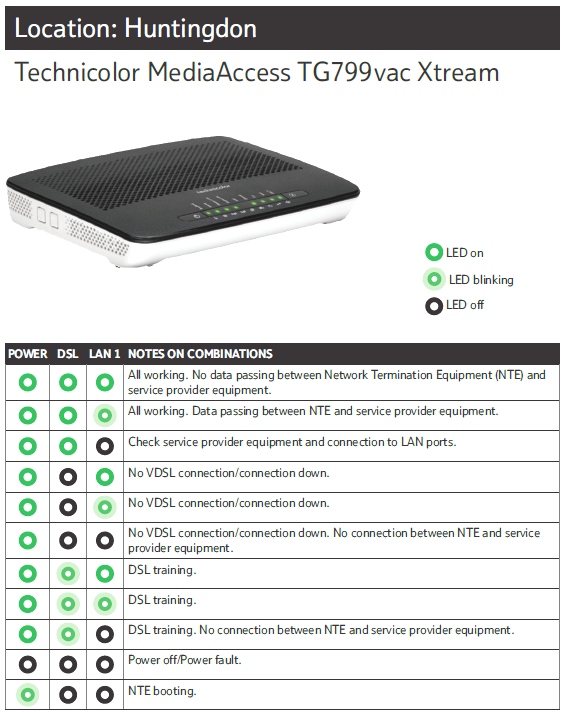
The TG799vac Xstream will already be known to some of our readers because it has previously been released as a VDSL2 (FTTC) product and this is the G.fast version of that same router. Assuming the G.fast version isn’t too different then it will support 802.11ac WiFi (hopefully at a faster speed than the originals claimed 450Mbps), as well as DECT and VoIP, Gigabit LAN and various other things.
Technicolor are quite popular among ISPs that like to bundle their own routers and so we can see this option becoming a common choice. Once again this is likely to be a self-install capable device, which could remove the need for an engineer to enter your property.
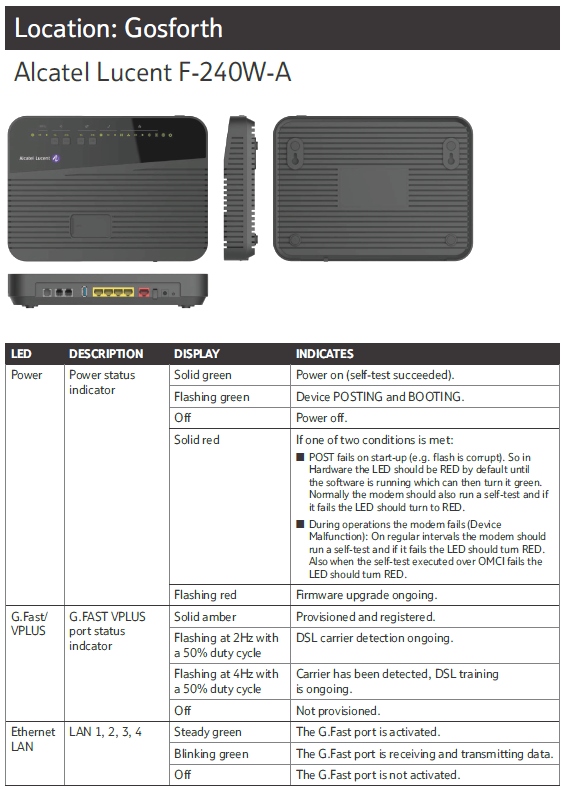
Finally we come to the Alcatel Lucent F-240W-A, which is interestingly only being used in the Gosforth (Newcastle) trial. Like most of the others it’s a fully-fledged router, boasting 802.11ac WiFi, 4 x Gigabit LAN ports, 1 x USB 3.0 port (spec says there should be two of these, but we can only see one) and even two phone (POTS) connectors.. not to mention the usual ports for WAN and G.fast/DSL.
The unit itself is however quite big (287mm x 208mm x 49mm) and heavy (around 1Kg). On top of that it’s another one that supports Reverse Power (see above) and there’s even a mention of support for Alcatel Lucent’s VPLUS technology that can boost the performance of existing VDSL2 (FTTC) lines, although this requires both VDSL Vectoring and a 35MHz profile (Openreach have faced some challenges with those).
Overall Openreach appears keen for G.fast to use hardware that could eventually be self-installed by consumers (like VDSL FTTC today), while also perhaps providing for those wanting an engineer installation or something along those lines. However the operator has yet to announce any final hardware, products or prices and so at this point we can merely speculate.
Mark is a professional technology writer, IT consultant and computer engineer from Dorset (England), he also founded ISPreview in 1999 and enjoys analysing the latest telecoms and broadband developments. Find me on X (Twitter), Mastodon, Facebook, BlueSky, Threads.net and Linkedin.
« Sky Broadband and Virgin Media Come Top in Ofcom Satisfaction Study

















































Comments are closed